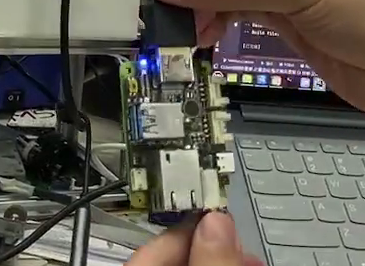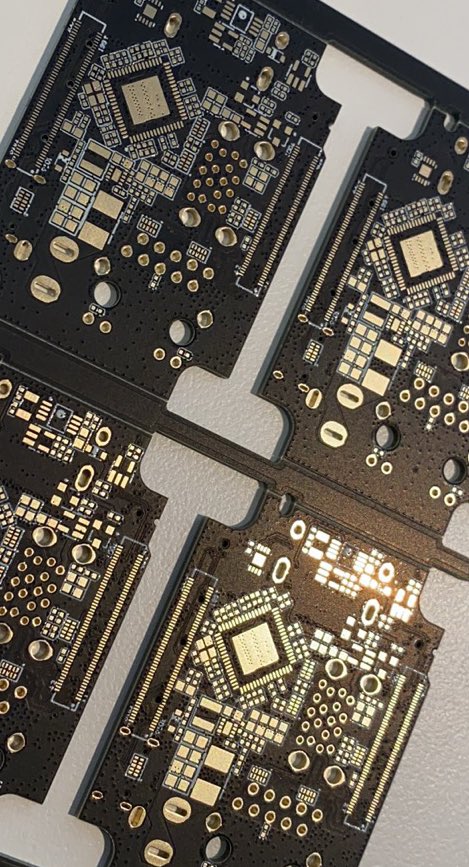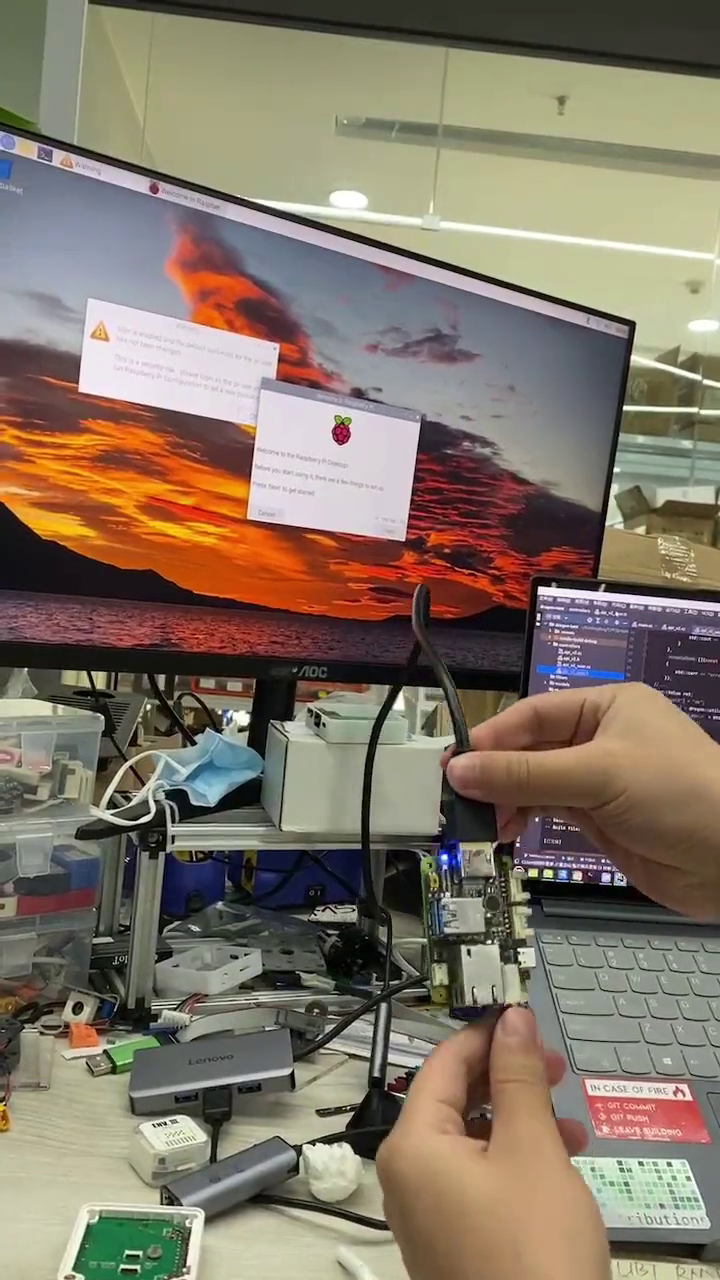Raspberry Pi Compute Module 4 Carrier Board Teased
Putting the 'module' in modular
Modular computer manufacturer M5 Stack is normally better know for its ESP32 based boards, but in a recent tweet it has given us a sneak peek at what appears to be a new Raspberry Pi Compute Module 4 carrier board for its stackable computing system.
CM4Stack HDMI works. pic.twitter.com/2Xgh03F0fXMarch 21, 2022
In the four-second video clip, we can see the Compute Module 4 attached to a small carrier board barely larger than the CM itself, but with visible USB 3.0 and Ethernet ports and, if the image on the monitor is anything to go by, a functioning HDMI. The fact the video is accompanied by the text “CM4Stack HDMI works” is another clue to the nature of what M5 Stack is teasing.
Alongside the more obvious ports are some others, identifiable through judicious use of the pause button and a zoomed in screenshot. There's a USB-C port for sure, and what looks like an audio jack next to the Ethernet socket that could be some sort of PoE connector, as the video shows no other power supply connected. There is a USB-C port which will most likely be a power input (unused in the video) but it could also provide data connectivity to flash the Compute Module 4's eMMC. There are also two Grove connectors, a connector often seen in Seeed Studio boards which breaks out pins from the GPIO into a polarized connector.





M5 Stack have teased this board once before, in a tweet on March 12 we can the carrier board inside of a 3D printed enclosure with a Raspberry Pi Compute Module 4 crowning the project. Further tweets on the same day tease a PCB which clearly has the dual interface connections now used by the Compute Module 4, moving away from previous models which used the SODIMM format.
M5 Stack manufactures open-source development toolkits out of Shenzen, China. Its kits generally include a controller module, which currently includes the low cost ESP32, attached to sensors and other modules, including power supplies, stepper motor drivers, Zigbee hubs and networking. In this way, custom stacks can be rapidly constructed to prototype ideas or fill specific niches in a smart industrial workflow.
The Compute Module 4 is much more powerful than the tiny microcontroller boards currently being used by M5 Stack, and would fit with the company’s open-source ethos. M5’s UIflow software is a graphical integrated development environment that at first glance looks a bit like Scratch, and which would be perfect for running on the Pi 4’s quad-core SoC.
We have reached out to M5 Stack to ask about precisely what they’re building and what we can do with it, and will update this article when we find out.
Get Tom's Hardware's best news and in-depth reviews, straight to your inbox.

Ian Evenden is a UK-based news writer for Tom’s Hardware US. He’ll write about anything, but stories about Raspberry Pi and DIY robots seem to find their way to him.